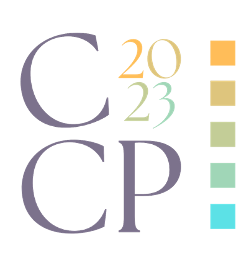
an examination of the historical development
and current prevalence in mental health
strategies and practices
pragat patel
People have always discovered new ways to express their ideas, feelings, and creativity, such as via painting, music, athletics, and other endeavors. However, in the current era, there has been a renewed focus on mental outlets, driven by various factors, including societal and technological changes. Regardless – one truth has been pervasive: mental outlets are integral to human existence and play a significant role in shaping individual perspectives and experiences. Recognizing their deep impact on the development and fostering of growth and progress is vital. After all, we are the product of what our minds facilitate. Prior to delving into the benefits and evolution of mental outlets, a clarification of its definition would be beneficial. Mental outlets are activities which allow individuals to release pent-up emotions and stress, significantly benefiting the growing mind. Young adults are facing newer and more daunting challenges in navigating their lives, establishing their identity, and finding their character. For such individuals, mental outlets provide necessary means to cope with the emotional turmoil of life, granting a much needed feeling of control and release, mitigating feelings of being overwhelmed, and fostering psychological regulation.
Several societies have worried about their mental health throughout history. In the past, people employed physical pursuits like athletics, dance, and theater to unwind and reduce stress. The Olympic Games were held every four years as a technique for the Greeks, who were known for their love of athletics, to worship the god Zeus. The competitions, which featured activities like sprinting, jumping, and wrestling, were intended to foster harmony and peace among the Greek city-states. Greek theater played a significant role in the culture, with plays examining topics like politics, war, and love. Thousands of spectators watched the plays being staged in huge outdoor theaters. These physical and artistic pursuits were seen as ways to relieve stress and promote mental well-being. Sports are still alive today, guiding young athletes and fans alike to enjoy their many wonders.
In Ancient Rome, physical activity was seen as a means of preserving a healthy body and mind. More than merely a location to take a bath, the Roman baths served as a hub for social interaction, exercise, and relaxation. Music and art were also highly valued, with wealthy Romans commissioning artists to create sculptures and paintings for their homes. Like the Greeks, the Romans saw physical exercise and artistic expression as ways to promote mental health and well-being. Arts and creativity have been a haven for escaping from reality and connecting with our roots. People still gather deep meaning from these components of life, pushing towards a revitalized sense of self.
In the Medieval Ages, prayer and meditation were popular ways for people to obtain inner calm since religion played a significant role in daily life. Several monasteries and convents were constructed in rural areas to give a quiet setting for spiritual reflection as monks and nuns would spend hours in prayer and meditation. Illuminated manuscripts and stained glass windows were significant features in churches and cathedrals, demonstrating how highly prized the arts were. These artistic endeavors were viewed as means of establishing a spiritual connection and fostering mental and emotional health. Millions of people around the world are guided by religion out of the dangerous depths of the struggles we face. For those who are able to appreciate its enormous beauty, it acts as a constant lifeguard.
Artists and thinkers of the Renaissance praised the beauty of nature and strove to comprehend human experience via the arts and sciences. Like Michelangelo and Leonardo da Vinci, many artists were adept in a variety of mediums, including painting, sculpture, and building. It was common for painters to depict the human body in their work, attempting to convey both its beauty and complexity. The mass manufacturing of books made possible by the printing press, which was created in the 15th century, increased public access to knowledge. As a result, there has been an increase in knowledge and awareness of mental health and wellbeing. Due to its ability to provide us a fresh perspective on life and better comprehend the world around us, awareness has grown in importance as a part of daily living.
Due to the profound social changes brought about by the Industrial Revolution in the 19th century, individuals started looking for ways to get away from the pressures of urban living. People started taking up hiking and other outdoor pursuits as a way to get back in touch with nature and away from congested cities. A growing number of doctors started to prescribe exercise as a treatment for mental health illnesses as they started to understand the value of physical activity for mental health. Around this time, mental health facilities started to appear, giving people a place to receive therapy and care for their mental health. These facilities had good intentions but due to poor organization or simply disconnect, they became quite problematic and dehumanizing. They have since developed and become much better at treating people of all backgrounds.
Sigmund Freud and other psychologists developed psychoanalytic treatment at the beginning of the 20th century, and it placed a strong emphasis on the value of using creative expression to explore the unconscious mind. More self-awareness and emotional healing were believed to be possible as a result of using art, music, and writing to uncover repressed emotions and memories. The emergence of avant-garde movements in literature, music, and art mirrored a desire to eschew conventional forms of expression and investigate novel modes of perception and emotion. With these practices, people were able to express themselves in fresh and creative ways, improving their mental health and general wellbeing. A greater emphasis on mental health in recent years has sparked increasing interest in mental outlets. Art therapy, music therapy, and writing therapy have also become popular alternatives for those who prefer non-pharmacological approaches.
But, it must be clear that as we have passed further in time, the various ways people can go about pursuing mental outlets has only been reinforced. We ourselves take part in many of these things without recognizing they are helping us move away from a chronically stressed state of mind.
Advances in technology have played a significant role in reshaping mental outlets in modern times. Social media platforms, online forums, and video-sharing platforms now allow individuals to connect with like-minded individuals and find communities centered around their mental outlets. The sense of connection and community that these platforms offer can be a powerful way to alleviate feelings of isolation and loneliness. Technology has also made mental outlets more accessible to a wider range of people, irrespective of their location. Apps which provide guided meditations and mindfulness exercises, can be accessed from anywhere using a smartphone. Online yoga classes and guided art sessions have also gained popularity, removing the constraints of location and scheduling. While mental outlets have always been essential to human well-being, the current era has witnessed an unprecedented level of interest in them. This newfound attention is in part related to rising awareness of mental health problems and the significance of self-care. Recently, more people have started to open up about their troubles with mental health, and the stigma attached to these problems is starting to fade. The stigma remains quite prevalent, re-emphasizing the need to address these issues. People are looking for new strategies to control their emotions and stress levels as mental health becomes a more mainstream discussion topic. Mental outlets have become a common and efficient way to accomplish this. Individuals may now interact with those who share their interests more easily thanks to the growth of social media platforms and digital technology, forging a sense of community that can be quite helpful during difficult times.
Furthermore, as society becomes increasingly fast-paced and demanding, people are seeking out ways to disconnect and find a greater sense of calm. The pressures of work and social obligations can be overwhelming, and mental outlets provide a valuable respite from the stresses of daily life. Activities like yoga, meditation, and nature walks have gained popularity as ways to slow down and cultivate a sense of inner peace. This has particularly been important during the COVID-19 pandemic, where mental health services have been in high demand due to the stress and anxiety caused by the pandemic.
In conclusion, the advancements in technology have played a significant role in reshaping the way we access mental outlets. Digital platforms have made it easier to connect with like-minded individuals, find communities centered around mental health, and access mental health services. Mental outlets have become an increasingly essential part of our lives, offering a respite from the stresses of daily life and promoting overall well-being. Finding a balance between online and offline activities is key as we traverse the ever-evolving digital landscape, and self-care should be given priority as it is a vital component of our general health and wellbeing.
Although they have existed in theory for thousands of years, mental outlets are fascinating to observe in action. Five of their numerous effects I found very reassuring.
- Enhances Cognitive Functioning: Mental outlets, such as reading, writing, and engaging in creative activities, can stimulate neural pathways and enhance cognitive functioning. This leads to improved memory, attention, and critical thinking skills.
- Reduces Stress and Anxiety: Engaging in activities that provide mental outlets can reduce stress and anxiety levels by helping individuals express and process their emotions. This can lead to a sense of relaxation and improved mental well-being.
- Improves Communication Skills: Through activities such as writing and public speaking, mental outlets can improve an individual’s communication skills. This includes the ability to express oneself clearly and confidently, as well as to understand and respond to others effectively.
- Boosts Creativity and Innovation: Engaging in activities that provide mental outlets can also boost creativity and innovation. This includes activities such as brainstorming, problem-solving, and creative writing, which can lead to new ideas and solutions.
- Enhances Emotional Intelligence: Mental outlets can also enhance emotional intelligence by helping individuals understand and regulate their emotions. This includes activities such as journaling and meditation, which can increase self-awareness and emotional regulation skills.
For youth, this support speaks beyond their current time because each of these impacts is forever ingrained into their developing minds. Recognizing the unique potential in emotional regulation and expanding our focus could provide novel results, many of which will change our lives forever. Mental outlets have been a crucial aspect of human existence throughout history and continue to be vital for the well-being and development of individuals in today’s society. These activities provide an essential means of coping with emotional turmoil, stress, and anxiety, granting a feeling of control and release while fostering emotional regulation, creativity, and coping skills. As we have seen through the evolution of mental outlets over time, they have adapted to the changing social and cultural contexts of each era. With the renewed focus on mental health in recent years, there has been a resurgence of interest in mental outlets and their benefits. Mental outlets are an essential tool for individuals of all ages, providing a means for self-expression and emotional regulation that can enhance our overall quality of life. It is vital to recognize their significance and promote their use in promoting a healthy mind and body.

Pragat Patel is an undergraduate student pursuing studies in biology and philosophy, deeply interested in the intersection of science and the humanities. With a unique research background, he delights in examining the crossways between various fields to provide insight into intricate and complex issues. He is passionate about health policy advocacy and applies his analytical perspectives to make a meaningful contribution to society. Driven by his fascination with the history of medicine, he harbors a desire to create a lasting impact on the world through his endeavors.
